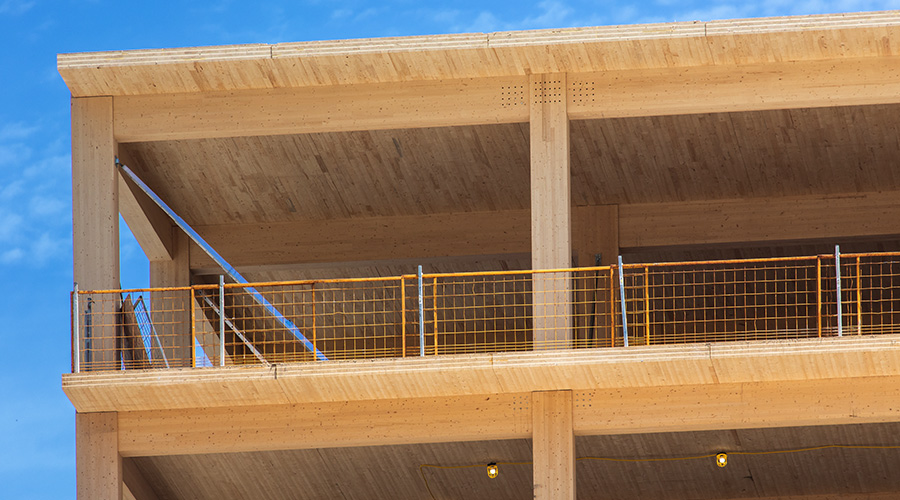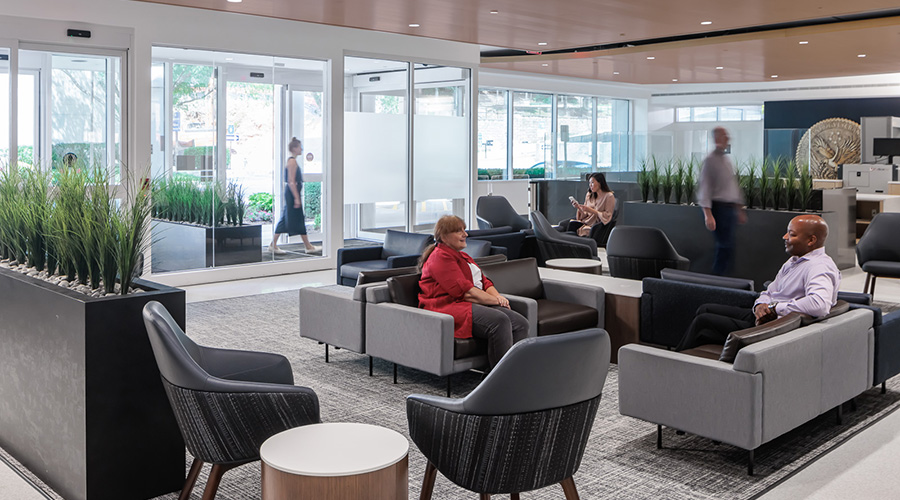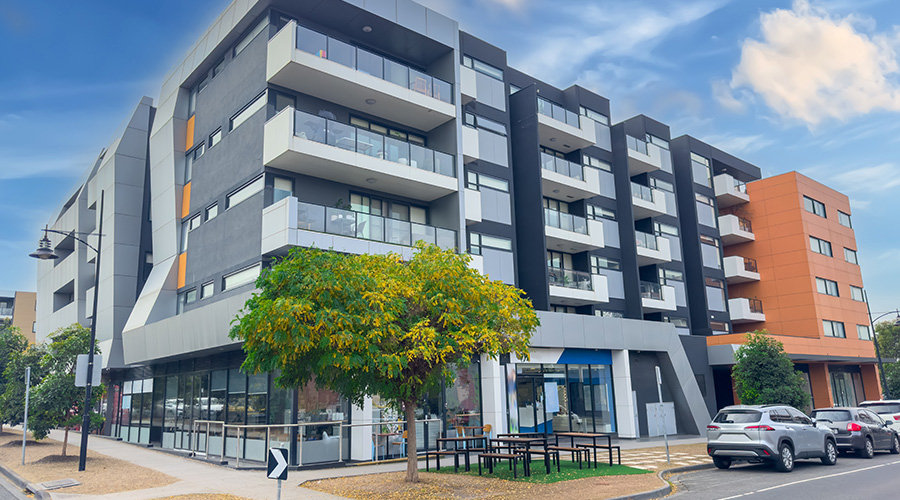Maintenance By Design
Managers ensure school maintainability by asserting their role in design
Aging school buildings, waves of new students and increasing public support for construction bonding issues have added up to busy schedules, millions of square feet of new space for K-12 students and double duty for many maintenance departments.
On top of their daily maintenance schedules, many departments are also playing an active and positive role in the construction process. School designers, district administrators and managers have realized the benefit of involving maintenance — including standardized systems and more durable materials and equipment, which all contribute to the cost effective maintainability of schools.
But the pace of construction these days is taxing maintenance managers and their staffs. Making time to review documents and walking the job site is an additional burden on top of daily work orders.
Despite that, managers in districts of all sizes and with varying levels of construction activity are finding ways to stay involved in the design and construction process, because, they say, doing so offers the schools — and their departments — long-term benefits.
Goal: Maintainability
Last year, school districts spent $29 billion on new construction and renovation. Over the next three years, districts are expected to spend another $79 billion. Next fall, students will enter nearly 200 million new square feet of space, and maintenance departments will be responsible for every square foot of that and billions more.
No one knows this better than Jerry Smith, director of maintenance for the Clark County School District, which includes Las Vegas. Clark County might be the fastest-growing U.S. school district, constructing 12 to 15 schools a year to keep up with the flood of new residents. A $3.5 billion bond passed in 1998 is funding a total of 88 new schools.
“There’s a lot of bond money for construction, but the general operating budget hasn’t increased likewise,” Smith says. “The increase in the physical plant puts a strain on our staff and the time we can spend on maintainability reviews of design.”
Despite the staff crunch, Smith and other managers have made time to stay involved in the process. Sitting at the table during the early stages of planning and design meetings and regular preview of and comment on construction blueprints and documents lets managers bring up key issues involving the design and material and equipment specification before designs are finalized and construction begins.
Larry Pauling, director of maintenance for Prince George’s County Public Schools in Maryland, has assigned a special team of maintenance technicians to stay involved in the design process. Pauling is overseeing the construction of 26 new schools in the next five years, plus renovations and additions. He believes the team’s participation is important to ensure the best buildings possible for the money, and for the long term.
A Team Effort
But the level of involvement of maintenance staff depends in part on how easily managers and staff can manage all the other daily maintenance requirements. For example, the Atlantic Public Schools has four schools under construction and another one starting this summer, and the district just completed a large number of new and renovation projects. But many of the district’s existing schools require a great deal of daily maintenance, so fitting in the time and affording the staff is a challenge.
“We try to be part of the process as much as possible, but sometimes things just get by us,” says Rob Thompson, director of maintenance for Atlanta Public Schools. Smith agrees, adding that there are things he would change if he could have caught them earlier.
Smith’s mechanical coordinator, who oversees the mechanical, electrical, boiler and plumbing trades, is his primary representative in reviews and meetings. Through this involvement, he has managed to persuade designers and accountants that central HVAC systems are more cost effective from a maintenance standpoint than rooftop units. Experience and participation also has influenced designers to use only built-up roofing, rather than single ply, because it makes the most long-term sense for this desert-bound district.
Thompson uses a design review team made of trades managers and staff members with particular expertise. The team also consists of maintenance personnel from the zone where construction is taking place. The design review team sits in on meetings during the design stage.
“We raise our particular issues, which are based in part on our experience with other buildings and systems,” he says.
Thompson’s maintenance design review team documents suggestions, then checks to see if the suggestions have been incorporated into the final design documents. This step is important because not everything the review team asks for always makes the first round of designs.
“Usually, it has worked out well for us,” he says. “Sometimes, things get value engineered out as a result of the budget, but a lot of times, the substitutions are things we can live with.”
At Prince George’s County Public Schools, Pauling says a similar group of representatives from his staff meet with designers and project managers at 35, 65 and 95 percent completion and at the end of the project.
To make sure that these large meetings properly address maintenance issues, maintenance personnel also walk the job site periodically. Pauling started taking digital pictures of installations to document how the installation was done, and he keeps the photos on file.
What is particularly helpful for Pauling is receiving the blueprints and construction documents before the meetings.
“Each shop reviews their particular area of responsibility to identify potential maintenance problems,” he says. Participants take a close look at access to equipment and inadequate installation, but they review the whole spectrum of building systems from roofs to floors.
Balancing Act
Keeping abreast of the construction progress might mean changing staff responsibilities, standardizing approaches to construction and relying on experience to guide the process.
Pauling has made changes to the Prince George’s County’s school maintenance staff, in part to better facilitate participation in construction. Despite handling more than 40,000 work orders a year, Pauling’s department maintains regular involvement in construction.
The department staff can do this because Pauling trained custodial workers to do light maintenance tasks, such as relamping or replacing switches, which has freed up time for the rest of the staff.
“We train and certify our custodial personnel at each school to be ‘maintenance medics,’” he says. “This program is highly successful. This year to date, we accomplished over 6,000 work orders using maintenance medics — work that would otherwise have had to be accomplished by core maintenance personnel.”
What hampers further improvement in the process, he says, is insufficient standardization. In the school districts surrounding Atlanta, especially where there is more new construction than renovation, standardization of design and specifications reduces the need to involve maintenance.
But Atlanta Public Schools use many old buildings, and much of the work is renovations. Design and equipment needs are so different among the schools that specifications can’t be standardized easily.
“This means we have to keep a closer eye on not only what is installed, but how it is installed,” he says.
But with all the construction in Clark County, the big problem that Smith faces is trying to keep up. Of the 266 schools in the district, 100 have been constructed since 1990.
“Generally, the schools have been well built and good equipment has been installed,” he says. “The problem is, we’re building them so fast we don’t have a chance to inspect the school before we have to take them over. We are normally playing a lot of catch up.” Smith says they try to rely on history and proven equipment designs.
“We’re normally not looking for the better mousetrap,” he says. “We’d rather have tried and proven systems that are reliable, energy efficient and, of course, require minimal maintenance.”
Pauling says durability is an important design characteristic that they continually emphasize. The district tries to build schools that last 50 years, and that design goal has implications for systems and materials.
“I realize that architects want creativity, but often, people fail to understand the long-term maintenance costs,” Pauling says. “They think breakdown maintenance is the trend. Because of school funding, our schools have to last a long time.”
Despite his insistence on maintainability, Pauling continues to work on a good relationship with his counterparts in design and planning. Collaborating and compromising, if need be, is important in the construction process.
“I do appreciate the professional working relationship my maintenance department has with the architectural and planning department,” he says. “After all we all want to have the best program in the nation.”
Related Topics:











